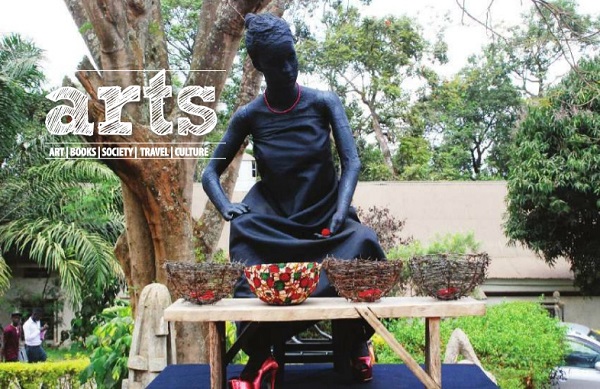
Leading Ugandan sculptor tackles the male chauvinism of an ancient board game
“Why would anyone ask me why I chose to present omweso? It is simply part of our material cultural heritage!”
That is how passionately Dr. Rose Namubiru Kirumira feels about the subject of her current exhibition of sculptural interpretations of one of Uganda’s oldest board games.
Yet, notwithstanding her excitement, many a visitor to the Makerere Art Gallery in Kampala where the exhibition is, can be heard asking how on earth anyone, let alone a woman (omweso is a traditionally a man’s game) would choose omweso, of all things, as the theme for an art exhibition. The incomprehension is compounded when the artist confesses she does not even know how to play it.
So what is it about this game that so much confounded Kirumira to pick it up and give it such prominence on the artistic high stage?
The art academic recounts how, during her research, she stumbled upon the omweso board game and immediately perceived it in a way few did – an artifact in the same category as a mat, basket, etc.
Beyond that, it is a game that instructs the players in matters of strategy in war, business, and other undertakings.
In other words, it is the equivalent of the Western chess game. She also discerned the pattern of the game and observed that as the people played it, the face of the wooden board changed progressively as the seeds created shifting designs as the players moved them from one hole to another in different quantities. The result of this, in the artist’s rendition, was a collection of aesthetically enhanced board games ranging from the real omweso as we know it to the abstracted editions.

Omweso, despite the long-entrenched Luganda designation, is neither indigenous to the Baganda nor to Uganda. History books maintain that it was likely introduced to Uganda some centuries ago by the Bachwezi, who are believed to have picked it from ancient Egypt and passed it on to other cultures along their migration routes. Today the game is still popularly played in several countries, including neighbouring Tanzania. The game is a grid of 32 (4×8) pits or holes and 64 seeds or counters also known as empiki in Luganda. But Kirumira’s versions of omweso on display are totally unlike the typical board game.
First she crafted the actual board game in a large format and embellished the holes with copper and brass sheets whose brownish colour resonates with the colour of the wood. It also gives it a smooth surface luster that enables the players to easily pick out the seeds with their hands.
The other piece is a larger-than-life size board carved out of a tree trunk. It has a figurative image of an African mask with two wide eyes and a nose. It is raised as high as a table and can accommodate about six people seated on either side.
The rest of the game boards on display are abstract adaptations of omweso; with varying numbers of pits – in other words not useable, made of cement or terracotta, while others are fabricated in wire. It was interesting during the official launch of the exhibition to see the space transformed into a vibrant play station as people had an intimate interaction with the art works playing the very games on display.
There is another metaphorical angle of the artist’s approach to the omweso. She asserts that the winning stroke in the game is called ‘akakyaala’ (small woman). Ironically, according to long-held traditions, women are not allowed to play omweso. She expresses this impression through a female figure wrought in a modified plastic dummy painted and dressed in pitch back. The figure clad in red stiletto heels holds red beads attempting to play omweso. However, the pits of the games are this time made of barbed wire, which makes it practically impossible for her to play the game. She could perhaps be alluding to the cruelty of the male chauvinism and an attempt to stifle the women’s ability to think strategically.
Moreover, Kirumira is no stranger to the bizarre when it comes to her artistic expression; for over two and a half decades she has been involved in the production of off-the-wall humongous wooden sculptures that stand as monuments in countries including Canada, United States, China, Denmark, and Uganda. The omweso show is running under the theme “Let’s Talk about Omweso” and it includes works of her young protégés: Sheila Nakitende, Allen Nabukenya, Tadeo Kasirisimbi, and Joan Nakigudde.
****
editor@independent.co.ug
 The Independent Uganda: You get the Truth we Pay the Price
The Independent Uganda: You get the Truth we Pay the Price



